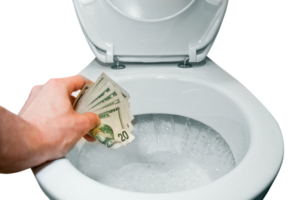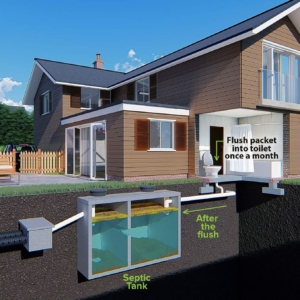Sink Caulking 101: Step-by-Step Guide
Sink caulking or grout being degraded is a common defect I have found in homes as I perform a home inspections in South Florida. It’s important to keep water contained and out of our walls and cabinets to prevent moisture damage and fungus growth. In this blog, we will discuss sink caulking and share the steps to keep your wet areas like sink maintenance. Similar steps are applied to other areas in the home such as bathroom toilets.
Why Sink Caulking Is Important
As mentioned above, it’s all about keeping water out of areas where it doesn’t belong to protect from finishes being damaged and/or fungus growth.
Sink caulking is important because of it:
- Prevents water damage to surrounding areas.
- Keeps unwanted water, dirt, and pests from entering the gap between the sink and countertop.
- Maintains a clean and hygienic kitchen environment.
- Helps maintain the appearance of the sink and countertop.
- Prevents mold and mildew growth.
Many have asked what is the best caulk for kitchen sink or what kind of caulk for bathroom sink but they are no different in application. They are both wet areas that need to be protected.
The best caulk for a sink is typically a 100% silicone sink caulking, as it:
- Resists water and humidity well.
- Is mold and mildew resistant.
- Has a long lifespan and does not shrink or crack over time.
- Adheres well to a variety of surfaces, including ceramic, porcelain, and fiberglass.
- Is flexible and can accommodate slight movement in the sink and countertop without cracking.
This is a minor costly maintenance project for the home. Maybe something to consider for this spring cleaning list if you haven’t added it already.
The cost of caulk for sinks varies depending on:
- The type of caulk (e.g. silicone, latex, etc.).
- The size of the caulk tube.
- The brand.
- The retailer.
On average, a standard 10 oz tube of 100% silicone caulk can cost anywhere from $5 to $15, with high-end options costing even more. A smaller tube may cost less, while a larger tube will cost more. It’s always best to compare prices and read product reviews before making a purchase.
How to Caulk a Sink to Countertop
To caulk a sink to countertop:
- Clean the sink and countertop thoroughly to remove any dirt, grease, or residue.
- Cut the tip of the caulk tube to match the width of the gap between the sink and countertop.
- Apply a steady, continuous bead of caulk along the gap.
- Use a caulk smoothing tool or your finger to smooth out the caulk and remove any air bubbles.
- Clean up any excess caulk with a damp cloth.
- Let the caulk dry completely before using the sink. (Refer to the manufacturer’s instructions for recommended drying time.)
Repeat the steps for caulking undermount kitchen sink from the inside of the cabinet. Clear the area as needed to provide work space.
Note: It’s a good idea to mask off the surrounding areas with painter’s tape to avoid getting caulk on them. Also, wearing gloves can help keep your hands clean.
Check out this quick video by eHow Home that gives an overview of the steps for sink caulking.
Summary: Caulking Sinks 101
A quick and easy maintenance task that can save time, money and damage to your home.
Reminder that caulking prevents leaks and damage by:
- Creating a watertight seal between the sink and countertop.
- Filling any gaps or cracks that could allow water to seep into surrounding areas.
- Acting as a barrier against moisture, which can cause damage to the countertop, cabinetry or surrounding walls.
- Preventing mold and mildew growth by blocking water from entering and settling in the gap between the sink and countertop.
- Minimizing the risk of water damage from spills or splashes that may occur while using the sink.
By creating a tight seal and blocking moisture, caulk helps to maintain the integrity of the sink, countertop, and surrounding areas, which helps to prevent leaks, water damage, and other issues over time.
Related Article:
Yes You Should Caulk Your Toilet And Here Is Why (2022 Guide)
I hope this blog article has been helpful. If you have additional questions and want to get in contact with GGR Home Inspections please send us a note, text, or call.






Pingback: Don’t Ignore a Loose Toilet 2022 – Prevent Water Damage – GGR Home Inspections
Pingback: Yes You Should Caulk Your Toilet And Here Is Why (2023 Guide) - GGR Home Inspections